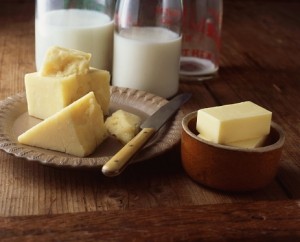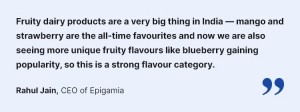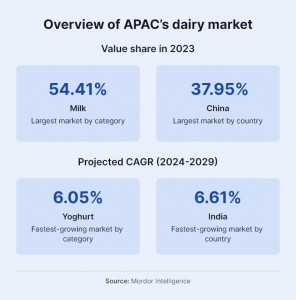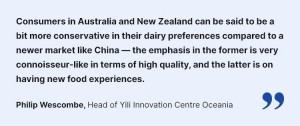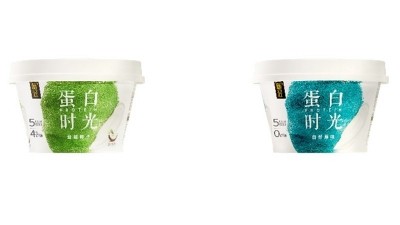FNA DEEP DIVE: DAIRY TRENDS
Polarised patterns: Fonterra, Yili and more big APAC dairy firms on how wellness and enjoyment trends are driving industry
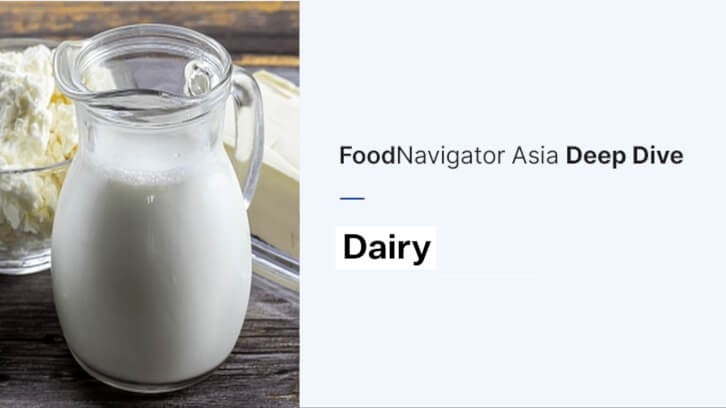
The popularity of dairy in APAC has not traditionally been uniform, with markets such as Australia, New Zealand and India dominating production and demand. But in recent years more Asian markets including China and Vietnam have gained in interest in this sector.
One of the key drivers is wellness and nutrition, particularly in China where the government and industry associations established consumer guidelines for daily dairy consumption in 2020 amid the COVID-19 pandemic.
China dairy giant Yili was a beneficiary in the resulting dairy boom and has major operations not only in China but also in New Zealand and South East Asia.
This has helped the firms understand how the trends driving traditional and newer dairy markets are very different.
“New Zealand is of course a long-time dairy consumption market, whereas China is a newer one, and we have definitely seen how consumer preferences in both of these markets differ quite substantially,” Yili Innovation Centre Oceania Head Philip Wescombe told FoodNavigator-Asia.
“In New Zealand, consumers are very conservative in their dairy preferences and place very strong emphasis on the quality and the traditional dairy experience – they view dairy sort of like they view wines, and have a connoisseur-like approach to it.
“In China though, consumers are all about seeking out new experiences when it comes to dairy – this means that we have a lot more scope to play in and more opportunity to combine different ingredients.
“Traditional Chinese Medicine is one example, where the Chinese consumer is very open and understands the health benefits that come from mixing this in with dairy – and the high nutritional value of dairy also helps to sell such new innovations to the Chinese population, so it’s a great product innovation area.”
Watch the video below to find out more:
Fonterra added that there are two major consumption trends driving dairy in the region which are at more or less polar opposites to one another.
“We are observing trends at opposite ends of the spectrum,” Fonterra Global Consumer & Customer Insights General Manager Tim Opie told us.
“On one hand, there's a notable rise in health and wellness (H&W) concerns particularly post-COVID where consumer increasingly mindful of dietary choices, seeking out functional foods and their associated benefits.
“Conversely, the pandemic has also underscored the importance of enjoying life to the fullest, leading to an emerging trend known as ‘revenge eating’ where consumers actively seeking indulgent, mood-boosting products as a means of treating themselves and enhancing their overall well-being.
“[This has given rise to a] tension between the trends of H&W versus YOLO (you only live once) – but at the same time we have noted that in APAC there is a strong opportunity for both macro trends to fuse along a ‘nature’s way’ trend, e.g. leverage a clean label, naturally-sourced product story to create permission to indulge.”
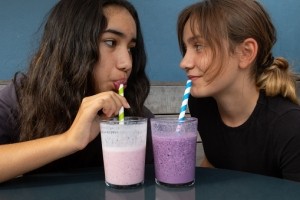
Whilst the health and wellness trend is driving dairy product innovation focus on areas from gut health to energy, the YOLO trend is moving this innovation towards more novel areas.
“For H&W we can see innovation here being translated not just into food formats but blurring the lines between supplements and food delivery – in Asia, more and more consumers are actively seeking out functional foods as they are driven by the belief that higher fortification equates to better health benefits,” Opie added.
“But for YOLO, this is bringing out an enormous appetite for exploration leading to consumers engaging in things like respite rituals (food & beverage rituals to counter stress etc.) or edible escapism (travelling with their tastebuds through global cuisines) – this in turn translates into novel, convenient one-handed consumption formats like cheese lollipops, sticks, crisps, bars and so on.”
India innovation direction
Over in India, the dairy industry has long been considered a key economic driver and is strongly backed by governmental support and policies such as the National Dairy Plan (NDP) and the Dairy Entrepreneurship Development Scheme (DEDS).
Here, innovation is also trending towards consumer demand for higher-value products.
“A significant shift has been observed towards value-added dairy products like cheese, whey protein, flavoured milk and so on over the past three years, in alignment with a growing consumer emphasis on health, convenience, and variety,” India dairy heavyweight Parag Milk Foods Executive Director Akshali Shah told us.
“The increasing awareness of health benefits, coupled with the rising middle class and changing dietary habits, has been a driving force behind the escalating demand for these value-added products.
“This has also resulted in an uptick of demand for organic dairy products, so many producers have proactively embraced organic farming practices, tapping into niche market segments and reshaping product offerings to cater to health-conscious consumers.”
There is also an increased focus on dairy for its high protein content, which has helped to drive the growth of segments such as cheese and high-protein milks.
“The population growth and escalating income levels in India have played a pivotal role in driving the expansion of the dairy sector – particularly, India is experiencing a notable upsurge in domestic demand for dairy products, particularly those rich in protein,” Shah added.
“This transition in dietary preferences has catalysed innovation and prompted the adoption of technologically sophisticated dairy farming methods such as automated milking machines.
“A diverse array of dairy products tailored to local palates have also been entering the market [such as] a significant uptick in the consumption of cheese [which is] expected to grow some 21.47% from 2023 to 2032.”
Modernised local dairy firm Epigamia concurred with these observations and highlighted that the same trends are pushing newer product formats such as drinkable yoghurt in the market.
“Yoghurt is more or less mainstream as a part of consumer diets in India now and everyone knows about the gut benefits from a dairy perspective – but in terms of what is likely to happen on the dairy product train I think that drinkable yoghurt is the one that is going to become really big in India over the next few years,” Epigamia CEO Rahul Jain told us.
“There is a traditional version of this called lassi in India, but from the newer innovation side of things, drinkable yoghurt is not yet that developed [as a packaged product sold in supermarkets].
"In addition, we know that fruity dairy products are a very big thing here - mango and strawberry being the all-time favourites and more unique fruity flavours like blueberry also gaining popularity."
Asia is where the opportunities lie
Based on population size alone, Asia makes a very attractive case for the dairy sector to focus on given both traditional-yet-expanding dairy markets like India and newer ones like China – but the opportunities are not equal across the entire sector.
“We know that Oceania boasts a mature dairy market, with a per capita consumption of US$318, while Asia remains in its early stages with a per capita consumption of just US$32.3, according to Euromonitor data – this means that there is a 10x consumption difference between both of these markets,” Opie added.
“But it would be significant to note that the most pronounced gap here actually exists in dairy food products – particularly cheese, as in Asia cheese primarily exists in sliced form with limited consumer awareness and access to the diverse range of cheese varieties available.
“A key difference in Asia is that the cheese opportunity has largely developed out of standalone snacking occasions and applications perspective [but] less so culinary where dairy not generally fused with traditional Asian dishes; whereas in Oceania it developed from a sandwich and culinary application perspective so it has now pushed significantly into snacking occasions.
“So we are witnessing a burgeoning demand for dairy foods in APAC and we think growth opportunities will stem from Asian markets where dairy consumption remains relatively low.”
That said, the other crucial point to be made for dairy in Asia is that products need to have a strong affordability consideration as the market is much more price sensitive.
“Consumers are faced with the challenges of rising living costs, hence they are seeking greater value and nutritional completeness in their purchases,” he added.
“Fonterra has recently innovated the new Anlene Total 10 as a response to this, which offers a comprehensive solution by providing 10 benefits in a single glass of milk, thus extending beyond merely addressing mobility concerns to encompass various aspects of healthy ageing.”
Plant-based not a threat
Product pricing is also a key reason that the dairy industry remains relatively unconcerned about novel plant-based dairy products such as oat milk or almond milk edging traditional dairy out at the moment.
“In Australia or New Zealand, the main challenge is that traditional milk is still quite low-priced compared to the plant-based versions, so for a standard consumer it's still a difficult decision to shift up to that higher priced beverage” Wescombe said.
“Whereas in Asia, there is an added challenge to going to market with plant-based milk as some of these have a long legacy and are even made fresh at home so it can be very hard to match that with a processed product.
“Yili is also working on plant-based dairy products alongside regular dairy and some brands are doing really well especially in China, but in terms of expanding beyond there it’s about finding the right timing.”
Fonterra added that there is no ‘either/or’ in the plant-based dairy discussion, but instead this should be viewed as a complementary sector.
“We believe dairy is still the most nutritious option and dairy remains our core strength - but the world is changing rapidly, so we recognise the preferences of some consumers and the rise of flexitarians,” Opie said.
“As such, we believe there is a largely complementary opportunity here [and] new technologies have a place alongside dairy, i.e. there is a role for both dairy and other sources of nutrition to feed the world’s growing population.
“Fonterra has also invested in the alternative proteins area, where in 2019 we invested in Motif Foodworks that develops lab-grown alternatives to milk protein, egg and meat protein; and in 2022 we invested in a start-up company with DSM developing non-dairy proteins using precision fermentation.”
We will be taking a closer look at Healthier Product Innovation and Protein Trends in our Growth Asia Summit 2024 this coming July, which will feature insights from a wide range of industry leaders and experts. Don't miss out – register here today!

